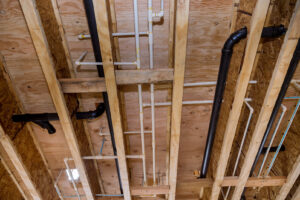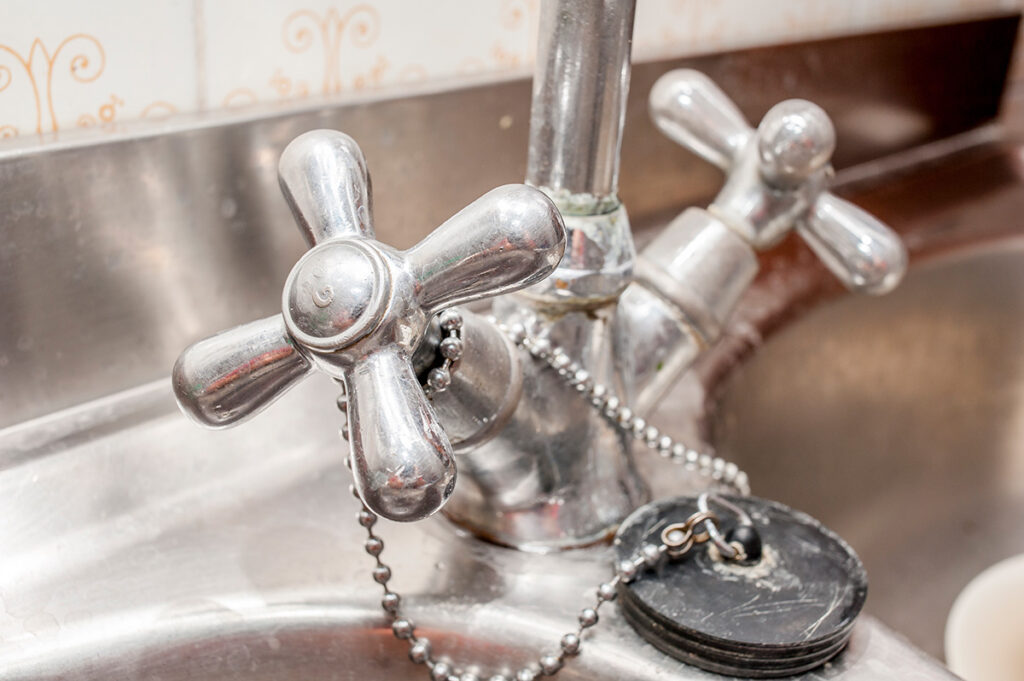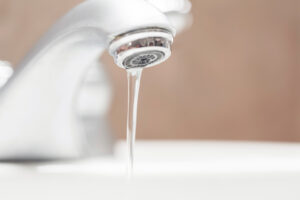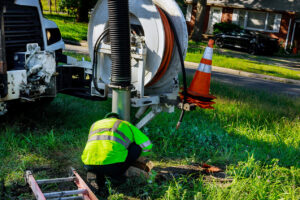Older Longview homes carry unique charm and history but also come with plumbing systems that reflect decades of wear and technological changes. Homeowners often face issues such as corrosion, low water pressure, and outdated materials—including galvanized steel, cast iron, and lead pipes. This article examines the most frequent plumbing concerns in these vintage houses, explains how to identify and fix them, and discusses why specialized plumbing services are essential. It also offers practical maintenance tips and guidance on preventing common problems while maintaining a professional and accessible tone.
The article is organized into several sections. First, an in‐depth look is provided at the most frequent plumbing issues found in older Longview homes. Next, methods to correctly identify these problems are outlined. Detailed repair solutions for various systems are then discussed, along with the importance of preventative maintenance and the health and safety risks of ignoring issues. Finally, guidance is given for finding trusted plumbing repair services locally.
What Are the Most Frequent Plumbing Issues in Older Longview Homes?
Older Longview homes suffer from problems caused by outdated materials and years of wear. Common issues include degraded pipes, blockage in drain lines, and malfunctioning vintage fixtures. Many of these problems arise from materials that were once state-of-the-art but no longer meet modern standards.
Plumbing systems in these homes often use galvanized steel pipes, cast iron drain lines, and lead pipes, all of which pose safety and efficiency risks. Symptoms include discolored water, reduced water flow, frequent clogs, and leaks. Additionally, outdated fixtures can be costly and difficult to repair, often contributing to water waste and higher utility bills. Routine inspections—both internal (slow drains, fluctuating water pressure) and external (visible rust, moisture stains)—are critical to avoid costly emergency repairs.
How Do Galvanized Steel Pipes Cause Plumbing Problems?
Galvanized steel pipes, once standard for water distribution, deteriorate over time due to constant exposure to water and environmental conditions. Internal corrosion leads to rust and mineral deposits that constrict water flow, reducing pressure and causing leaks. Rust particles may flake off into the water supply, detrimentally affecting water quality. Homeowners might hear squeaky or clanking sounds—a clear sign of degradation. Often, replacing these pipes with copper or PEX is the most effective long-term solution, and regular professional inspections can catch early signs of corrosion.
Why Are Cast Iron Drain Lines Prone to Failure in Vintage Homes?
Cast iron drain lines are valued for durability and their ability to dampen sound, but they are prone to corrosion and abrasive wear from constant water flow and debris. Over time, pinhole corrosion weakens the pipes, causing leaks or complete system failure. Mineral deposits and debris may accumulate, causing clogs and slow drainage. Modern trenchless repair techniques such as pipe relining can restore these pipes without extensive excavation, helping prevent water damage while maintaining system integrity.
How Can Lead Pipes Affect Plumbing Safety and Function?
Lead pipes, once common for their malleability, now pose serious health risks. Lead can leach into drinking water—especially in acidic conditions—leading to neurological damage, developmental delays, and cardiovascular issues. The weakening of joints over time can result in leaks or water damage. Modern standards have replaced lead with safer materials like copper or PVC, and homeowners should consider full replacement to improve water quality and system reliability.
What Causes Low Water Pressure in Older Plumbing Systems?
Low water pressure in older homes can result from several factors. Corrosion, sediment buildup, and mineral deposits can narrow the interior of pipes, while partially blocked fixtures—such as faucets or showerheads—further restrict flow. Aging valves, connectors, and outdated pressure regulators may also contribute. Professional evaluations using pressure testing can identify these issues, leading to solutions such as pipe cleaning, component replacement, or installation of new regulators to restore proper water flow.
How Do Vintage Fixtures Impact Plumbing Repairs?
Vintage fixtures add aesthetic value but may not work well with modern plumbing systems. Their design, intended for older technologies, can lead to wear such as cracks and leaks, and may require custom components for repair. Additionally, sediment buildup around fixture connections can hinder proper sealing. A balanced approach is necessary: preserving historic character while upgrading functionality through restoration or selective replacement ensures both safety and aesthetic appeal.
How Can Homeowners Identify Plumbing Problems Unique to Older Longview Houses?
Identifying plumbing issues in older homes requires observing both obvious and subtle signs. Visible corrosion, leaks, slow drains, fluctuating water pressure, or changes in water quality are key indicators. Homeowners should also listen for unusual sounds like gurgling or water hammer. Regular annual professional inspections are recommended, along with DIY tests such as comparing water pressures and using water quality kits. Keeping a repair log can help monitor changes over time and prevent small issues from becoming major problems.
What Signs Indicate Corroded or Damaged Pipes?
Corroded pipes may show water with a rusty or discolored tint, accompanied by frequent leaks and damp spots around fixtures. A metallic taste in the water is another indicator. Audible signs, such as whining or banging noises when water is turned on, often suggest that corrosion has compromised the integrity of the pipes—warnings that should prompt professional attention.
How to Detect Slow Drains and Blockages in Old Plumbing?
Slow drains in sinks, bathtubs, or showers often indicate debris or scale buildup. Homeowners can perform simple experiments—like timing how long it takes for water to drain—to assess the severity. Unusual odors or gurgling noises further suggest blockages. Professional plumbers use tools such as drain cameras and hydro-jetting to diagnose and clear obstructions before they lead to severe water damage.
When Should You Suspect Lead or Galvanized Pipes in Your Home?
Persistent issues like discolored water, reduced pressure, or a metallic taste may indicate problems with lead or galvanized pipes. Homes built before the 1980s are more likely to have these materials. If there are regular appearances of rust flakes or unusual noises, it is important to have the plumbing inspected by certified professionals to determine the materials and condition of the pipes.
How to Recognize Water Pressure Fluctuations and Their Causes?
Fluctuating water pressure—especially when multiple fixtures are in use—may signal sediment buildup, damaged pipes, or malfunctioning regulators. Homeowners might notice gradual declines in flow or pressure drops when activating additional fixtures. Professional testing and inspection of the entire system can help pinpoint the exact cause, allowing for targeted repairs that restore balance and efficiency.
What Are the Best Solutions for Repairing Plumbing in Older Longview Homes?
Effective repair of older plumbing systems requires addressing both symptoms and underlying issues. Homeowners face a choice between patching old systems or investing in comprehensive upgrades. Often, replacing outdated components with modern materials leads to improved water quality, pressure, and long-term reliability. Technologies like trenchless pipe lining enable non-invasive updates to galvanized steel, cast iron, and lead pipes. Additionally, fixture-level repairs help maintain both functionality and historic charm.
How Is Galvanized Steel Pipe Replacement Performed?
The replacement of galvanized steel pipes begins with a thorough inspection to identify affected areas. Professionals then remove the corroded pipes using specialized tools and replace them with modern materials such as copper or PEX. After installation, the system is tested for leaks and calibrated for water pressure. Although the initial cost may be high, the benefits of improved water quality and flow usually justify the investment.
What Are Effective Methods for Cast Iron Drain Line Repair?
Cast iron drain lines can be repaired using methods like pipe relining—a trenchless technology where a resin-coated liner is inserted and cured in place, forming a durable layer. Alternatively, spot repairs with epoxy coatings can address localized corrosion. In severe cases, complete replacement may be necessary. A combination of these techniques, tailored to the system’s condition, helps restore functionality while minimizing disruption.
How to Safely Remove and Replace Lead Pipes?
Safely replacing lead pipes starts with a comprehensive assessment to determine the extent of corrosion and contamination. Certified professionals then carefully remove the lead pipes using specialized containment measures to prevent further contamination. The old pipes are disposed of according to environmental regulations, and modern pipes made from copper or PEX are installed to ensure improved water quality and reliability. This proactive measure protects health and increases property value.
What Are Common Fixes for Low Water Pressure in Vintage Systems?
To remedy low water pressure in vintage homes, professionals may flush out mineral deposits using hydro-jetting, replace outdated pressure regulators, and update worn faucets and valves. In cases where the pipes themselves are the issue, upgrading to modern materials or installing a booster pump often restores proper flow. A thorough system diagnosis ensures that the most effective solution is implemented.
How Can Vintage Fixtures Be Restored or Replaced?
Restoring vintage fixtures can involve repairing worn valves, re-caulking, or refinishing surfaces to eliminate leaks. When restoration is not feasible, replacement with modern equivalents that mimic the original style is an option. Many specialists offer combined restoration and modernization services to ensure both reliability and the preservation of historic aesthetics.
Why Is Specialized Plumbing Service Important for Older Longview Homes?
Older homes in Longview have plumbing systems that differ significantly from modern constructions. Plumbers specializing in vintage systems understand the complexities of outdated materials and building practices. Their expertise allows for customized solutions that not only address immediate issues but also protect the home’s long-term investment. Advanced diagnostic tools, such as camera inspections and hydro-jet systems, enable them to detect hidden problems effectively. Additionally, local knowledge ensures repairs comply with building codes and regional standards while minimizing disruption.
What Unique Challenges Do Vintage Plumbing Systems Present?
Vintage plumbing systems often use materials like galvanized steel and cast iron that are prone to corrosion and degradation. Outdated fixtures and inefficient layouts further complicate repairs. Homeowners may face hidden leaks, sediment buildup, and weakened pressure regulators. These challenges require creative solutions that combine restoration with modern updates, ensuring long-term reliability while preserving historical integrity.
How Do Local Building Codes Affect Plumbing Repairs in Longview?
Local building codes in Longview ensure repairs meet modern safety and performance standards while respecting historic character. These regulations affect the materials and methods used in repairs; for example, new components must comply with current codes even when replacing outdated pipes. Working with licensed professionals familiar with local codes minimizes risks such as fines or voided insurance and ensures all upgrades are built to last.
What Tools and Techniques Are Used for Older Home Plumbing?
Plumbers repairing vintage systems combine traditional tools—like pipe wrenches and sealant tapes—with modern diagnostic equipment such as cameras and hydro-jetting systems. Techniques like trenchless pipe lining minimize disruption by curing a resin-coated liner within existing pipes. These methods allow for precise repairs while maintaining the system’s overall integrity and performance.
How Does Transparent Pricing Benefit Homeowners?
Transparent pricing allows homeowners to understand the full cost of repairs upfront, helping to prevent unexpected expenses. Clear communication regarding fees, labor, and parts fosters trust and facilitates budgeting. This openness is especially important for complex vintage plumbing systems, where multiple issues may be interconnected. Ultimately, clear pricing contributes to customer satisfaction and long-term peace of mind.
What Guarantees Should You Expect From Plumbing Repairs?
When hiring specialized plumbing services, homeowners should expect comprehensive guarantees covering workmanship, materials, and system performance. Reputable firms provide warranties—often extending to both labor and replacement parts—that ensure any recurring issues are promptly addressed. Such guarantees protect the homeowner’s investment and offer reassurance that the repairs are durable and compliant with local standards.
How Can Preventive Maintenance Help Avoid Common Plumbing Problems in Older Homes?
Preventive maintenance is key to avoiding costly and disruptive repairs in aging plumbing systems. Regular inspections, cleaning, and timely repairs can detect early signs of corrosion, leaks, or blockages before they escalate. Simple maintenance routines—including checking faucets, pipes, and fixtures—can extend the system’s lifespan and reduce water waste. Annual professional check-ups combined with DIY monitoring are essential to keeping vintage systems running smoothly.
What Routine Checks Should Older Homeowners Perform?
Homeowners should regularly survey all exposed piping for signs of rust or corrosion and inspect fixtures for leaks. Monitoring water pressure and clarity, testing for sediment buildup, and checking areas prone to moisture (like under sinks and around water heaters) are important. Listening for unusual sounds, such as water hammer, may also indicate hidden issues. These routine checks help catch problems before they become major repairs.
How Often Should Pipes and Fixtures Be Inspected or Replaced?
A comprehensive inspection of older plumbing systems is recommended at least once a year. Depending on factors such as water quality, environmental exposure, and overall system wear, some pipes or fixtures may need replacement every 10 to 15 years. Regular professional evaluations, combined with homeowner observations, ensure timely maintenance and prevent unexpected breakdowns.
What Are Simple DIY Tips to Maintain Vintage Plumbing?
Simple DIY measures can help maintain vintage plumbing. Regularly clean faucet aerators and showerheads to remove mineral deposits and use vinegar-water solutions to descale fixtures. Periodically flush water heaters and accessible pipes to remove sediment and monitor for leaks. While these steps can address minor issues, significant problems should always be handled by professionals to ensure lasting performance and safety.
When Is It Time to Call a Professional for Plumbing Maintenance?
Homeowners should call a professional when faced with persistent low water pressure, frequent leaks, discolored water, or recurring blockages that DIY methods cannot resolve. If routine inspections reveal extensive corrosion or structural damage, expert intervention is necessary to avoid further costly damage and ensure that repairs are safe and compliant with local standards.
What Are the Health and Safety Risks of Ignoring Plumbing Issues in Older Longview Homes?
Ignoring plumbing problems in older Longview homes can lead to serious health and safety hazards. Leaky pipes and corrosion may cause water damage, mold growth, and even compromise the structural integrity of the home. Contaminants from lead or rust can pollute drinking water, increasing risks of respiratory issues, allergies, and other health complications. In addition, a malfunctioning drainage system can result in sewage backflow, further jeopardizing resident safety. Addressing these issues promptly is critical to protecting both health and property.
How Can Lead Pipes Affect Family Health?
Lead pipes can directly compromise family health by leaching toxic lead into drinking water. This exposure may cause neurological damage, developmental delays in children, and increased blood pressure in adults. The significant health risks associated with lead emphasize the importance of replacing outdated lead pipes to safeguard water quality and overall family well-being.
What Are the Consequences of Pipe Corrosion and Leaks?
Corroded pipes deteriorate water quality and can lead to leaks that damage the home’s structure. The rust and contaminants released during corrosion not only affect taste and safety but also foster mold growth, potentially compromising the home’s foundation. Prompt maintenance and repair of corroded pipes are essential to prevent extensive water damage and further health risks.
How Does Poor Water Pressure Impact Daily Living?
Inadequate water pressure makes everyday tasks such as bathing, cooking, and cleaning difficult. Low pressure can extend the time needed to fill bathtubs or wash dishes and may stress the plumbing system, accelerating further degradation. Restoring proper water pressure improves daily convenience and helps maintain the longevity of the plumbing system.
Why Is Timely Drain Line Repair Critical?
Timely repair of drain lines is essential to prevent sewage backups and extensive water damage. Blocked or slow-draining pipes create an environment conducive to bacterial growth and unpleasant odors, jeopardizing indoor air quality and overall health. Prompt drainage repairs minimize these hazards and help prevent costly repairs later on.
Where Can Longview Homeowners Find Trusted Plumbing Repair Services for Older Homes?
Reliable plumbing repair services are crucial when addressing the unique challenges of vintage Longview homes. Homeowners should seek companies that have proven experience with older systems and a strong local reputation. Trusted providers offer transparent pricing, comprehensive guarantees, and customer testimonials to back up their work. Reputable firms often provide free diagnostics and detailed estimates, ensuring that homeowners fully understand the scope and cost of repairs. Additionally, quality services may offer maintenance plans to help prevent future issues and extend the life of the plumbing system.
What to Look for in a Plumbing Company Specializing in Vintage Homes?
When selecting a plumbing company, ensure that the firm has extensive experience with historic systems, relevant certifications, and a solid track record. Look for customer testimonials and references that confirm the provider’s ability to handle the specific challenges of vintage plumbing. Companies that offer clear warranties and transparent pricing are especially desirable.
How Does Local Expertise Improve Repair Outcomes?
Plumbing companies with local expertise understand the unique construction practices and water quality issues common in Longview homes. This familiarity allows them to provide accurate diagnostics and tailor repair solutions according to regional building codes and environmental conditions. Homeowners benefit from quicker response times, fair pricing, and durable repairs when working with locally experienced professionals.
What Are Typical Pricing Models for Older Home Plumbing Repairs?
Pricing for plumbing repairs in older homes can vary based on the scope of work. Many companies offer flat-rate packages for standard repairs, while more complex issues may be charged by the hour. Homeowners should request detailed estimates that break down parts, labor, and any additional fees to manage costs effectively and avoid unexpected expenses.
How Can Customer Reviews Help Choose the Right Service?
Customer reviews provide insights into a service provider’s reliability, timeliness, and overall quality. Reviews from other homeowners with vintage systems can highlight how well a company addresses common issues. Positive feedback regarding transparency, long-term warranties, and respectful treatment of historic homes is a strong indicator of trustworthy service.







